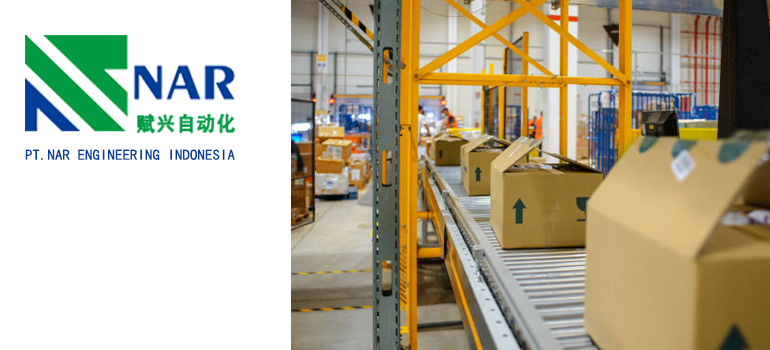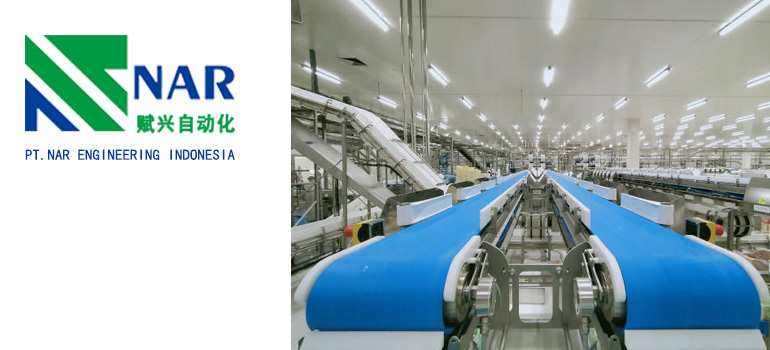Summary:
Enhancing Productivity: Top Conveyor Parts and Accessories Revealed
Understanding the Role of Conveyor Parts and Accessories
Significance of Enhancing Productivity in Material Handling
Essential Conveyor Parts for Productivity Enhancement
Advanced Accessories for Enhanced Efficiency
Understanding the Role of Conveyor Parts and Accessories
Conveyor parts and accessories are the unsung heroes of modern material handling, quietly but effectively facilitating the movement of goods and materials in various industries. To grasp their significance, let’s delve into the intricate role they play in the seamless operation of conveyor systems.
Importance of Efficient Conveyor Components
In any conveyor system, each component plays a vital role in ensuring the system’s overall efficiency and reliability. From the conveyor belt itself to the smallest accessory, every part must function optimally to maintain smooth material flow.
Conveyor Belts: The Backbone of Material Transportation
At the core of every conveyor system lies the conveyor belt, serving as the primary means of transporting goods from one point to another. Whether it’s conveying raw materials in a manufacturing plant or sorting packages in a distribution center, the conveyor belt forms the foundation of material movement.
Rollers and Pulleys: Enabling Smooth Movement
Rollers and pulleys are integral components that support and guide the conveyor belt along its path. Rollers facilitate smooth movement by reducing friction between the belt and the supporting surface, while pulleys provide the necessary tension and redirection to keep the belt on track.
Overview of Key Accessories in Material Handling Systems
In addition to the fundamental components, conveyor systems rely on a range of accessories to optimize performance and address specific operational needs.
Sensors: Adding Intelligence to Conveyor Systems
Sensors play a crucial role in modern conveyor systems, providing real-time data on various parameters such as speed, position, and product detection. By integrating sensors into the system, operators can monitor and control material flow more effectively, enhancing both efficiency and safety.
Guides and Guards: Ensuring Safety and Stability
Guides and guards are essential accessories that help maintain the integrity of the material being transported and protect personnel from injury. Guides prevent products from veering off course, while guards shield operators from moving parts and potential hazards, ensuring a safe working environment.
In essence, conveyor parts and accessories form the backbone of material handling operations, enabling industries to streamline processes, minimize manual intervention, and maximize productivity. As we delve deeper into the world of conveyor systems, let us explore the significance of enhancing productivity through the optimization of these essential components.
Significance of Enhancing Productivity in Material Handling

Efficiency and productivity are paramount in the realm of material handling, where every delay or bottleneck can have ripple effects throughout the supply chain. Let’s delve into why enhancing productivity holds such significance in this critical domain.
Impact of Conveyor Efficiency on Overall Productivity
Conveyor systems serve as the arteries of modern material handling operations, facilitating the seamless flow of goods from point of origin to destination. By enhancing the efficiency of conveyor systems, businesses can significantly increase throughput, reduce lead times, and improve overall operational performance.
Streamlining Material Flow: Minimizing Downtime and Delays
Efficient conveyor systems ensure smooth and continuous material flow, minimizing the risk of bottlenecks and congestion. By optimizing conveyor routes, eliminating unnecessary stops, and reducing cycle times, businesses can enhance productivity and maintain a steady pace of operations.
Improving Order Fulfillment Speed and Accuracy
In industries such as e-commerce and retail, where speed and accuracy are paramount, enhancing conveyor productivity can have a direct impact on order fulfillment. By automating sorting processes, implementing advanced tracking systems, and optimizing picking and packing operations, businesses can accelerate order processing and meet customer demands more effectively.
Leveraging Advanced Parts and Accessories for Improved Efficiency
The efficiency of conveyor systems is heavily influenced by the quality and performance of their components and accessories. By investing in advanced parts and accessories, businesses can unlock new levels of efficiency and productivity in their material handling operations.
Enhancing Conveyor Belt Durability and Performance
Upgrading to high-quality conveyor belts with advanced materials and construction can significantly enhance durability and performance. By reducing downtime due to belt failures and maintenance, businesses can improve overall conveyor efficiency and productivity.
Harnessing Sensor Technology for Real-Time Monitoring
Integrating sensors into conveyor systems enables real-time monitoring of critical parameters such as speed, temperature, and product positioning. By leveraging sensor data to optimize conveyor operations, businesses can identify and address inefficiencies proactively, leading to improved productivity and cost savings.
In summary, enhancing productivity in material handling is essential for optimizing operational performance, meeting customer demands, and gaining a competitive edge in today’s fast-paced business environment. By investing in efficient conveyor systems and leveraging advanced parts and accessories, businesses can streamline operations, increase throughput, and drive sustainable growth.
Essential Conveyor Parts for Productivity Enhancement
Conveyor systems rely on a multitude of components working in harmony to ensure smooth and efficient material handling. Let’s explore the essential conveyor parts that play a pivotal role in enhancing productivity across various industries.
Conveyor Belt: Backbone of Material Transportation
The conveyor belt is the cornerstone of any conveyor system, serving as the primary means of transporting goods from one point to another. Its design, material, and construction significantly impact the system’s efficiency and productivity.
Types and Materials of Conveyor Belts
Different applications require different types of conveyor belts, ranging from flat belts for general-purpose conveying to modular belts for specialized applications. Likewise, the choice of materials, such as rubber, PVC, or metal, depends on factors like load capacity, abrasion resistance, and environmental conditions.
Maintenance and Optimization Strategies for Conveyor Belts
Regular maintenance and optimization of conveyor belts are crucial for ensuring smooth operation and extending their service life. This includes tasks such as cleaning, tensioning, tracking, and replacing worn components. Implementing preventive maintenance schedules and utilizing advanced tracking technologies can minimize downtime and maximize productivity.
Rollers and Pulleys: Ensuring Smooth Movement
Rollers and pulleys are essential components that support and guide the conveyor belt along its path, ensuring smooth movement and efficient material flow.
Role of Rollers and Pulleys in Conveyor Systems
Rollers provide support to the conveyor belt and help reduce friction, allowing for smooth and consistent movement. Pulleys, on the other hand, serve as points of redirection, applying tension to the belt and ensuring proper tracking.
Selection Criteria and Maintenance Tips for Rollers and Pulleys
Choosing the right rollers and pulleys for a conveyor system depends on factors such as load capacity, belt speed, and application requirements. Regular inspection, lubrication, and replacement of worn rollers and pulleys are essential maintenance tasks to prevent system downtime and maintain optimal productivity.
In summary, conveyor belts, rollers, and pulleys are essential components that form the backbone of conveyor systems. By selecting high-quality components and implementing effective maintenance strategies, businesses can enhance productivity, minimize downtime, and optimize material handling operations for maximum efficiency.
Advanced Accessories for Enhanced Efficiency
In addition to fundamental conveyor components, advanced accessories play a crucial role in optimizing conveyor systems for peak performance and productivity. Let’s explore these innovative accessories and their contributions to enhanced efficiency in material handling operations.
Conveyor Sensors: Optimizing Operations with Smart Technology
Conveyor sensors are cutting-edge devices that provide real-time data on various aspects of conveyor system performance, enabling operators to make informed decisions and optimize operations for maximum efficiency.
Importance of Sensors in Conveyor Systems
Sensors play a pivotal role in monitoring critical parameters such as speed, position, temperature, and product identification along the conveyor line. By providing accurate and timely data, sensors enable operators to detect anomalies, identify bottlenecks, and optimize material flow for improved productivity.
Applications and Benefits of Conveyor Sensors in Productivity Enhancement
Conveyor sensors find a wide range of applications in material handling operations, from detecting product presence and monitoring conveyor speed to identifying and diverting faulty or misaligned items. By automating these tasks and providing real-time insights, sensors help reduce manual intervention, minimize downtime, and enhance overall system efficiency.
Automated Sorting Systems: Streamlining Material Flow
Automated sorting systems are sophisticated solutions designed to categorize and divert items along the conveyor line based on predefined criteria, such as size, weight, or destination. These systems leverage advanced technology to streamline material flow and optimize throughput in high-volume distribution centers and manufacturing facilities.
Role of Sorting Systems in Material Handling
Sorting systems play a critical role in optimizing material flow by efficiently routing products to their intended destinations, such as shipping lanes, storage areas, or production lines. By automating the sorting process, businesses can reduce manual labor, minimize errors, and achieve higher throughput rates, leading to enhanced efficiency and productivity.
Integration of Automated Sorting Systems with Conveyor Parts for Increased Efficiency
To maximize the benefits of automated sorting systems, seamless integration with conveyor parts and accessories is essential. This includes incorporating diverter gates, diverting arms, or conveyor diverters into the conveyor line to facilitate product diversion and routing. By integrating these components intelligently, businesses can achieve smoother material flow, minimize congestion, and optimize throughput for enhanced productivity.
In summary, advanced accessories such as conveyor sensors and automated sorting systems play a crucial role in enhancing efficiency and productivity in material handling operations. By harnessing the power of smart technology and automation, businesses can optimize conveyor systems, streamline material flow, and achieve peak performance in today’s fast-paced manufacturing and distribution environments.

